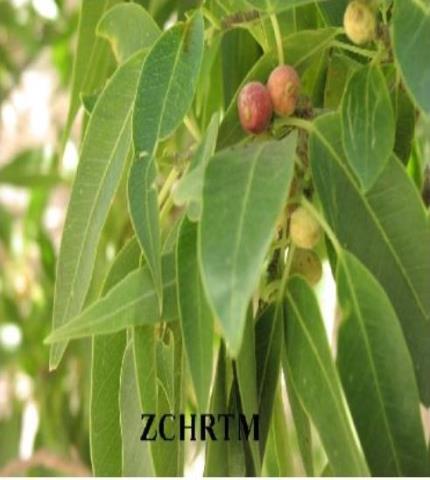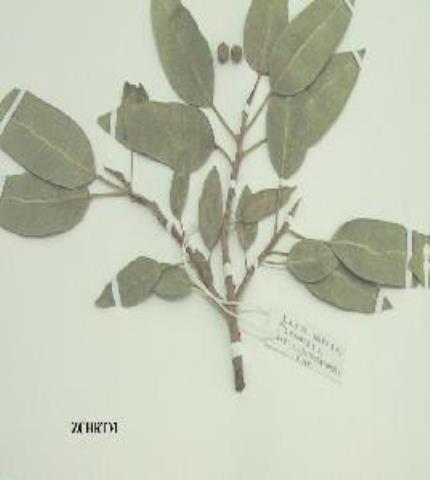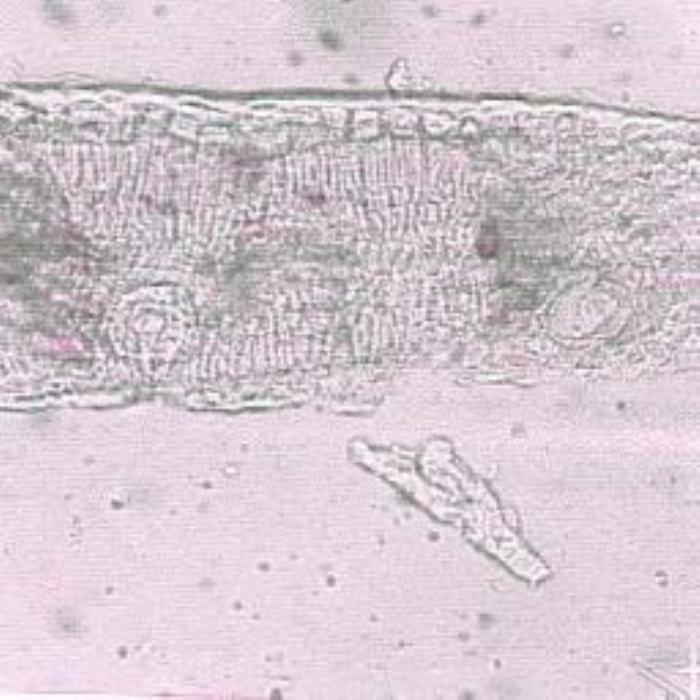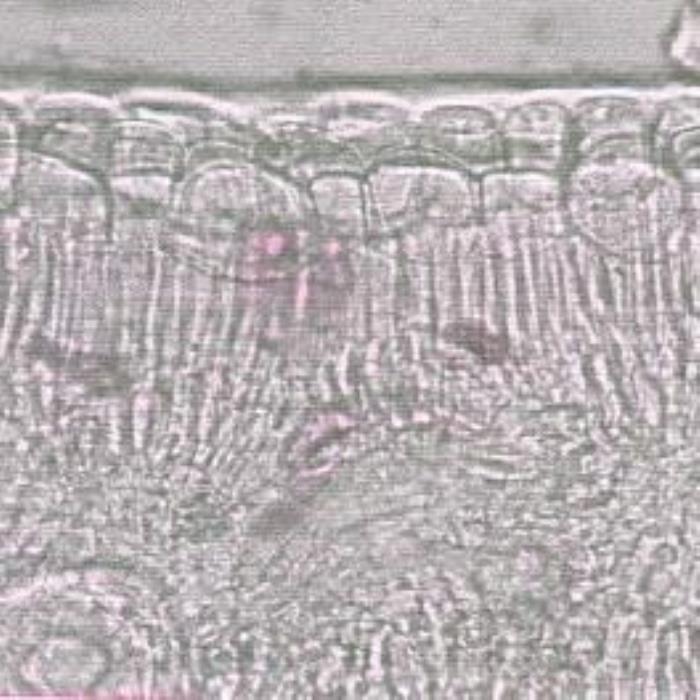
Ficus cordata / لثب
F. salicifolia Vahl
Teen barre, Athab, Eytib, Itebeh, Eytheeb, Ithab
Wonderboom Fig
Lathab, Athab
Moraceae

Fruits

Herbarium Sample
Ethnobotanical Characteristics
Description
Evergreen small tree up to 8(-15)m with milky latex; stem branching from the base, bark grey to grey brownish, smooth & in older parts peeling and with scales below. Leaves alternate, lanceolate, acute to acuminate tip, rounded base, entire margin, glabrous, shiny, lower surface paler than the upper surface ,5-20cm long x 1-6cm across. Monoecious flowers, male flowers sessile, stamen solitary; female flowers sessile, perianth 3-4 –lobed, style equaling ovary. Fruit fig, compound , axillary 1-2, orange to red when ripe, ostiole prominent.
Habitat & Distribution
In tropics throughout Arabia and North Africa, found along wadi banks and cliffs near water at all elevations; very common and widespread in mountains of eastern emirates. Evergreen and good shade provider.
Part(s) Used
Fruits, milky juice, leaves and wood
Traditional & Medicinal Uses
Milky sap used for skin allergy from external causes; sap of new leaves used to treat scorpion stings; powder of wood used with flour to treat malikholia (combined priapism and sexual impotence). Decoction of aerial parts used as poultice for swelling and body pains or to put the patient in a pit of sand saturated with this decoction; or as fumigant for weakness of body and aliments, In Oman leaves crushed mixed with lemon and eaten to treat indigestion; leaves also used on bruised fingers and toes and for removing warts; the fresh or dry under bark used frequently in tanning to give the leather a good strong red color.
Pharmacognosy and Phytochemistry
Parts studied
Leaves
Microscopic Description
In a surface view, both upper and lower epidermises consist of polygonal cells which are covered with a thick cuticle that has irregular striations and erupting warts. A transverse section of the leaf shows that it is unilateral. Both upper and lower epidermises consist of large bucket-like cells with thick straight cell walls and are filled with mucilage. Stomata are numerous in both epidermises and they are oval in shape and of the anomocytic type. The palisade tissue consists of one layer of longitudinal cells that have very thick and irregular cellular walls and narrow lumen. They are compactly packed and some of them have their cell walls colured with light brown pigments. The spongy mesophyll consists of cells with irregular shapes and they also have thick walls and their outlines show many curves and undulations. Some cells are spherical and are filled with light brown material. Few contain single calcium oxalate rosettes. The spongy mesophyll is traversed by vascular tissues that contain annularly and spirally thickened vessels. ( DPS ZCHRTM un pub. results).

a) TS of leaf

b) TS of upper part of leaf

c) TS of lower part of leaf
- (a). TS of leaf showing both epidermises to be consisting of bucket-like cells and covered with a thick cuticle, the palisade layer, a small spongy mesophyll zone and cross sections of two main veins.
- ( b). TS of the upper part of the leaf showing the large bucket-like cells of the upper epidermis, longitudinal palisade cells embedding larger cells filled with light brown pigments, spongy mesophyll cells embedding vascular tissues and a TS of a large vein (left bottom).
- (c). TS of the lower part of the leaf showing part of the palisade tissue, spongy mesophyll cells embedding vascular tissues part of which are containing coloured materials, a TS of a large vein and the lower epidermis with small polygonal cells. ( Magnifications: x 100, x 250 and x 250, respectively).
Organoleptic characteristics
Appearance: Solid powder
Colour: Green
Odour: Aromatic
Taste: Tasteless
Physicochemical constants
Loss in weight on drying at 105°C (%): 11.40-11.60
Solubilities ( %)
Alcohol solubility: 3.20-4.00
Water solubility: 15.20
10% ethanolic extractive: Not done
Ash values (%)
Total ash: 12.20%
Water soluble ash: 2.40%
Acid-insoluble ash: 0.40%
Successive extractive (%)
Petroleum ether (60-80 °C): 3.40-3.70
Chloroform: 0.80-1.10
Absolute alcohol: 2.50-3.20
Distilled water: Not done
pH values
pH of 1% solution: 8.50
pH of 10% solution: 8.23
The above results are under process of publication( DPS ZCHRTM un pub. results).
Chemical constituents
Alkaloids, flavonoids, glycosides, steroids/ terpenoids, resins and tannins were found in different extracts. The presence of coumarins, psorelen, mamesin and umbelliferene were reported from Saudi Arabia. Different species of Ficus contain a proteolytic enzyme, ficin which can digest ascarin. Sublethal does can cause vomiting and diarrhea. Latex causes local necrosis and anaemia when given sub cutaniously, orally it is not toxic. (DPS, ZCHRTM un pub. results; Ghazanfar 1994).
Pharmacological and Toxicological studies
Ficus cordata showed anthelmintic activity and microbiological activities. However, Ficus cordata subspecies scalifolia causes nervous disorders in cattle. Other species of Ficus such as F. bengalansis has been screened for anti-diabetic effects and allergic potential. F. racemosa has been studied for hepatoprotective activity. The F. carica has been reported for producing anaphylactic reaction. The methanol extract of the leaves of F. hispida showed hepatoprotective activity (Mandal etal.2002b).
Two outbreaks of neurotoxicosis are reported in cattle browsing on the leaves of Ficus spp. (Myburgh et. al., 1994). The glucose-lowering efficacy of a methanol extract of the stem bark of Ficus racemosa has been reported (Bhaskara et. al. 2002). A Leucodelphinidin derivative isolated from the bark of Ficus bengalensis Linn demonstrated hypoglycemic action at a dosage of 250 mg/kg given both in normal and alloxan diabetic rats (Geeta et al., 1994). In a study, the glucose-lowering efficacy of a methanol extract of the stem bark of Ficus racemosa has been reported (Bhaskara Rao, 2002). Ficus indica produced cytoprotective effects on experimental ethanol-induced ulcer in rat (Galati, et. al., 2002). In a study analyzed in terms of allergic symptoms, some patients showed allergic reactions provoked by Ficus plants (Karimian et .al., 2002). The plant showed antiinflammatory (Mandal et al., 2000). Hyper-triglyceridaemic activity has also been shown (Pervez et. al., 1999).
The pharmacological and toxicological studies carried out in our laboratory and the results in brief, on Ficus cordata (70% ethanolic extract) have been given below. The results presented without references showed unpublished data (UPD, ZCHRTM, DBMS):
1.) Ethanolic Extract 70%
|
ACTIVITY |
RESULTS |
|
Anti-inflammatory activity-Rat paw oedema |
The extract failed to show anti inflammatory activity. |
|
Anti-hypertension activity- Anesthetic rats |
Higher dose showed initial decreased in BP and HR for 5-10 min. only. |
|
Locomotor activity |
Showed significant increase in ambulatory time and distance traveled. |
|
Cardiotonic activity & HR-Isolated rat atria |
Showed an increased rate of contraction. |
|
Gross behavioral studies-Tremor/Twitches |
No toxic signs observed. |
|
Gross behavioral studies-Writhing |
No toxic signs observed. |
|
Gross behavioral studies- Diarrhea, Urination |
No diarrhea, urination reported. |
|
Mortality |
No death recorded. |
|
Motor co-ordination (String & Platform test) |
Not affected. |
|
Acute toxicity studies |
No toxicity reported. |
|
LD50 evaluation |
>6.4 g/kg. |
|
Sub-acute toxicity studies |
Sub-acute toxicity studies carried out following the treatment for 15 days. |
|
Haematological studies |
Some parameters changed. |
|
Biochemical studies |
Significant increase in Hb, MCH, MCHC. |
|
Effect on body weight |
Body weight increased following treatment for 15 days. |
|
Effect on vital organ weight |
No change recorded. |
Summary of the results
The plant extract showed initial decrease in blood pressure and heart rate. No significant anti-inflammatory activity was reported. The plant extract showed no severe toxic signs and symptoms. However, sub-acute administration of extract significantly changed some haematological parameters.
2.) Aqueous Extract
|
ACTIVITY |
RESULTS |
|
Anti-inflammatory activity-Rat paw oedema |
Extract failed to show anti-inflammatory activity, Extract increased the paw oedema instead, tested at higher dose. |
|
Anti-hypertension activity- Anesthetic rats |
Showed initial reduction in BP and HR for 5-10 min. only. |
|
Vasorelaxant activity-Isolated aortic strip |
Did not produced relaxation. |
|
Locomotor activity |
Did not significantly change. |
|
Cardiotonic activity & HR-Isolated rat atria |
Increase force of contraction, reduced rate. |
|
Effect on GIT smooth Muscle- Isolated guinea pig ileum |
No significant change in resting time observed. |
|
Effect on GIT smooth Muscle-Isolated rabbit jejunum |
No effect on amplitude and frequency of contraction recorded. |
|
Gross behavioral studies-Tremor/Twitches |
No toxicity was observed. |
|
Gross behavioral studies-Writhing |
No toxicity was observed. |
|
Gross behavioral studies-Diarrhea, Urination |
No abnormal symptoms were found. |
|
Mortality |
No death was recorded. |
|
Motor co-ordination (String & Platform test) |
Motor co-ordination not affected. |
|
Acute toxicity studies |
No toxic symptoms observed. |
|
LD50 evaluation |
>6.4 g/kg. |
Summary of the results
The plant extract did not produce anti-inflammatory activity, vasorelaxant activity. The extract showed a mild Cardiotonic activity. The plant showed no abnormal signs and symptoms appears to be safe as evidenced by acute administration.
References
- Andrews, F. W. The Flowering Plants of Anglo-Egyptian Sudan; (1950&1952) vol 1+II; Arbroath, Scotland.
- Bhaskara Rao R, Murugesan T, Sinha S, Saha BP, Pal M, Mandal SC. (2002) Glucose lowering efficacy of Ficus racemosa bark extract in normal and alloxan diabetic rats. Phytother Res. 16(6): 590-2.
- Department of Biomedical Sciences, Zayed Complex for Herbal Research and Traditional Medicine, Unpublished results.
- Department of Biomedical Sciences, Zayed Complex for Herbal Research and Traditional Medicine, Unpublished results.
- Department of Pharmacognostic Sciences, Zayed Complex for Herbal Research and Traditional Medicine ( ZCHRTM ),unpublished results .
- El-Ghonemy, A. A. Encyclopedia of Medicinal Plants of the United Emirates. (1993) 1st Edition, University of UAE.
- Galati EM, Pergolizzi S, Miceli N, Monforte MT, Tripodo MM. (2002) Study on the increment of the production of gastric mucus in rats treated with Opuntia ficus indica (L.) Mill. cladodes. J Ethnopharmacol. 83(3): 229-33.
- Geeta BS, Mathew BC, Augusti KT. ( 1994) Hypoglycemic effects of leucodelphinidin derivative isolated from Ficus bengalensis (Linn). Indian J Physiol Pharmacol. 38(3): 220-2.
- Ghazanfar S A. Handbook of Arabian Medicinal Plants. CRC Press, p.150, 1994.
- Jongbloed, M. V. The Comprehensive Guide to the Wild Flowers of the united Arab Emirates, Erwda, (2003) Emirates Printing Press, Dubai, U.A.E.
- Karimian-Teherani D, Hentges F. (2002) Allergy to Ficus benjamina. Bull Soc Sci Med Grand Duche Luxemb. (2): 107-13.
- Mandal SC, Maity TK, Das J, Saba BP, Pal M. (2002) Anti-inflammatory evaluation of Ficus racemosa Linn. Leaf extract. J Ethnopharmacol. 72(1-2): 87-92.
- Mandal SC, Saraswathi B, Kumar CK, Mohana Lakshmi S, Maiti BC. (2002) Protective effect of leaf extract of Ficus hispida Linn. against paracetamol-induced hepatotoxicity in rats. Phytother Res. 14(6): 457-9.
- Miller A.G, Morris M. Plants of Dhofar, The southern Region of Oman: Traditional, Economic and Medicinal Uses.(1987) Office of the Advisor for conservation of the Environment, Sultanate of Oman.
- Myburgh JG, Fourie N, van der Lugt JJ, Kellerman TS, Cornelius ST, Ward C. (1994) A nervous disorder in cattle, caused by the plants Ficus ingens var. ingens and Ficus cordata subsp. salicifolia. Onderstepoort J Vet Res. 61(2): 171-6.
- Perez C, Canal JR, Campillo JE, Romero A, Torres MD. (1999) Hypotriglyceridaemic activity of Ficus carica leaves in experimental hypertriglyceridaemic rats. Phytother Res. 13(3): 188-91.
- Western, A. R. The Flora of United Arab Emirates, an introduction. (1986) Publication of the UAE University.
